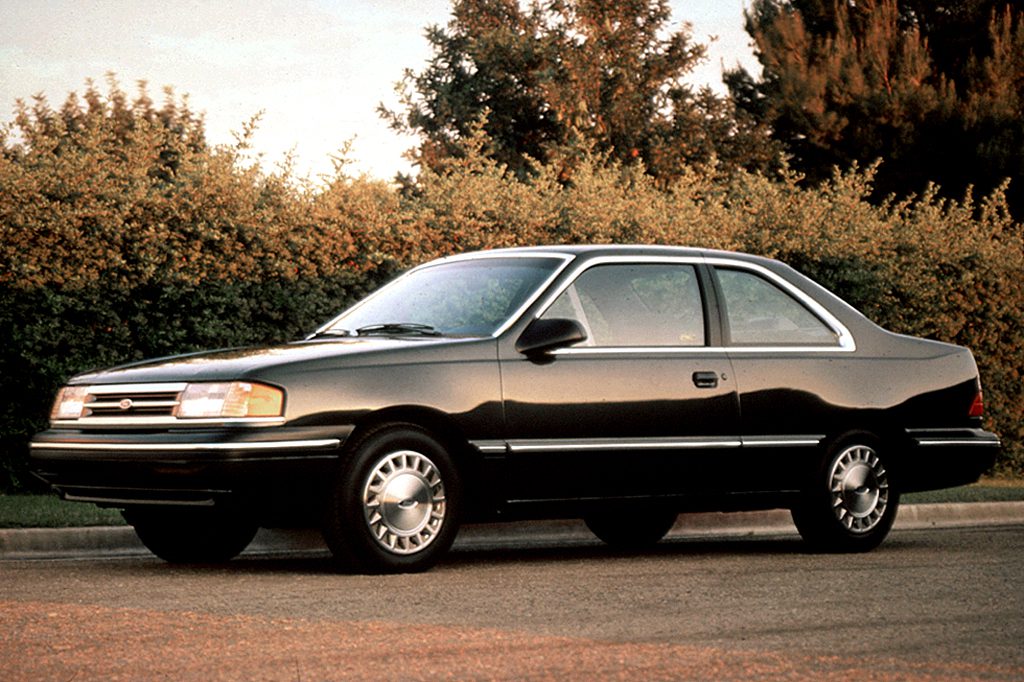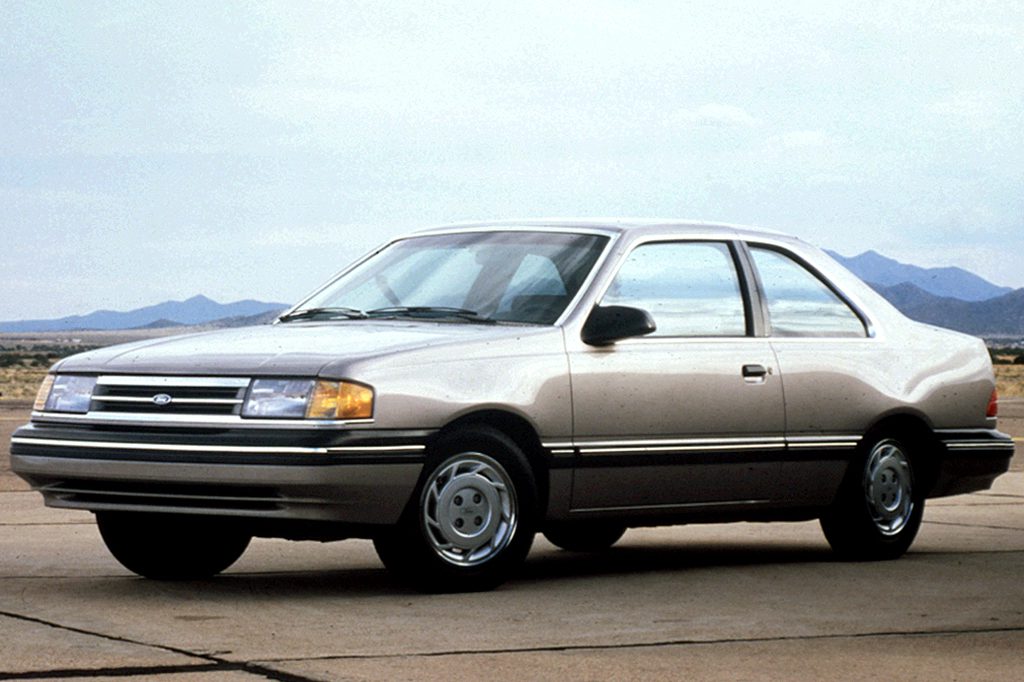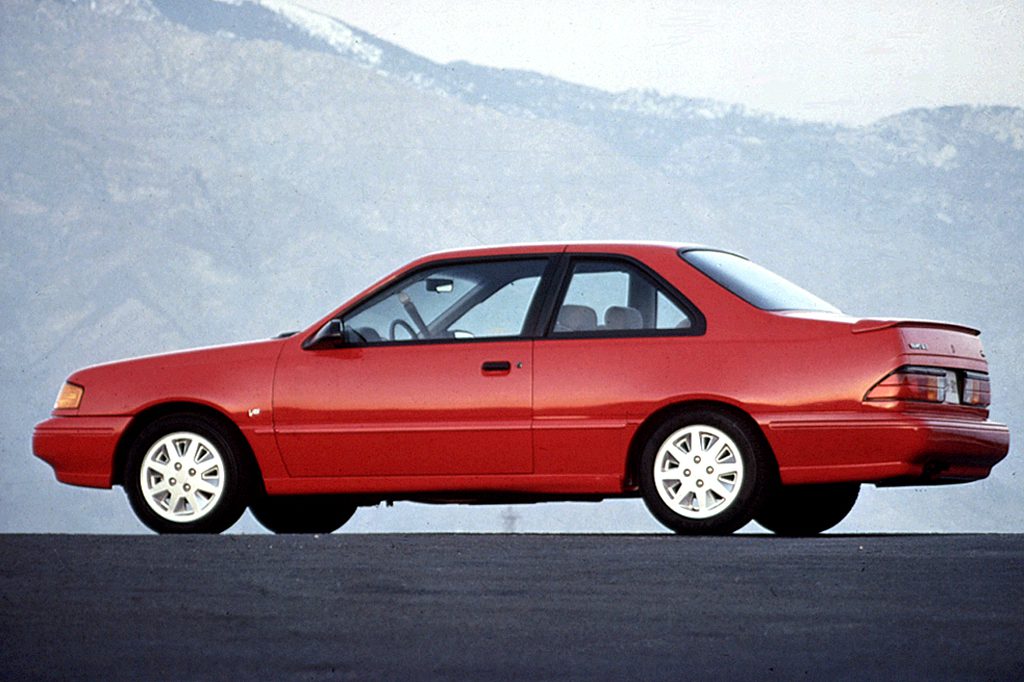| Compact car; Built in USA, Canada |
|
|
| Good condition price range: $1,000 – $1,500* |

1990 Ford Tempo 2-door coupe

1991 Ford Tempo 2-door coupe

1991 Ford Tempo GL 4-door sedan

1992 Ford Tempo 4-door sedan

1992 Ford Tempo GLS 2-door coupe
| Pros: |
|
| Cons: |
|
Though no match for Japanese rivals, you still get a lot of car for a very modest number of dollars. If it’s basic transportation that you’re seeking, Tempos are still worth a quick look.
Overview
Introduced for 1984, Tempo and the similar Mercury Topaz were facelifted in 1988. The front-drive 2- and 4-door sedans came in two trim levels for 1990: GL and GLS. A top-of-the-line LX edition came only as a 4-door. A driver-side airbag had been optional on 4-doors as early as 1986, though not many were installed. A part-time 4-wheel-drive option debuted in 1987, intended for use only on slippery pavement. This All-Wheel Drive system came only on 4-door sedans. A 98-horsepower 4-cylinder engine went into GL and LX models, while GLS and All-Wheel Drive Tempos got a 100-horsepower rendition.
Yearly Updates
| 1991 Tempo Minor refinements to quiet interior were the only notable changes for 1991. |
| 1992 Tempo A V6 engine became available for 1992 (standard on the sporty GLS), and Four-Wheel Drive departed. Four-door Tempos had a new monotone body and fresh taillights. |
| 1993 Tempo The sporty GLS faded away, leaving only a base GL 2/4-door and the costlier LX 4-door. The new console contained a removable cupholder. An airbag was optional only with the 4-cylinder engine, and only with automatic transmission. |
| 1994 Tempo Airbag-equipped Tempos got a new seatbelt layout: a 3-point lap/shoulder belt for the driver, but motorized belt for the front passenger. In other Tempos, both positions had motorized belts. |
